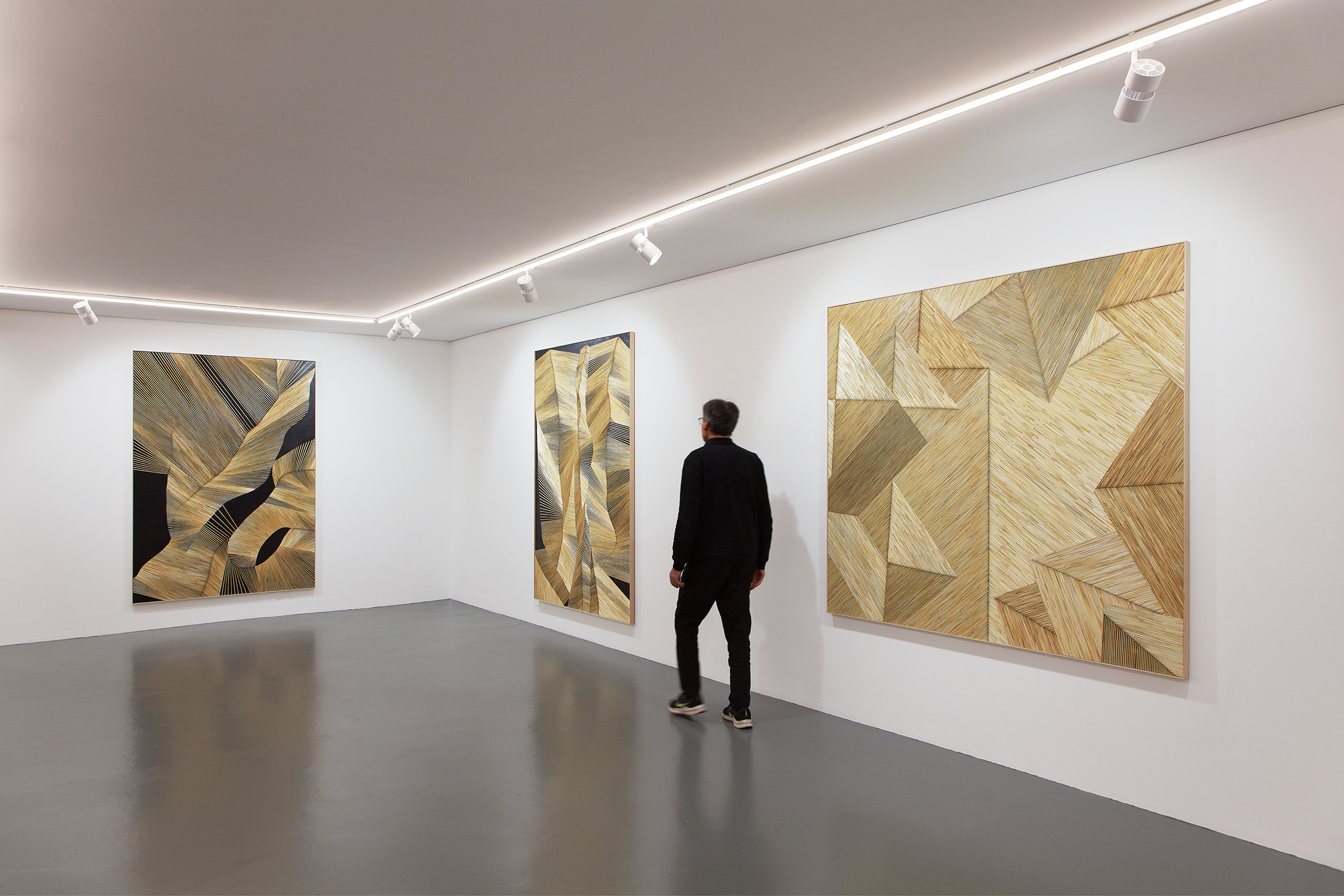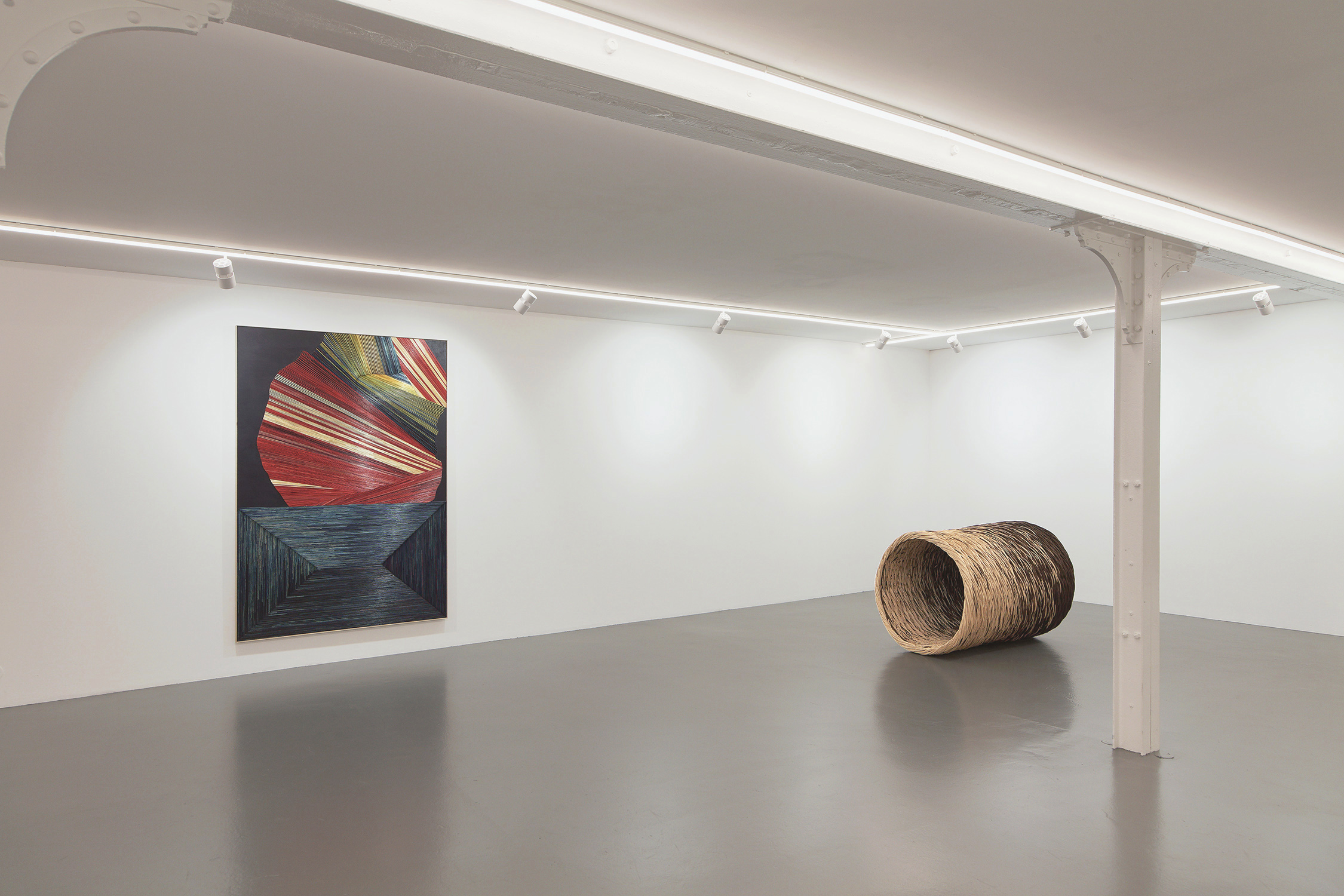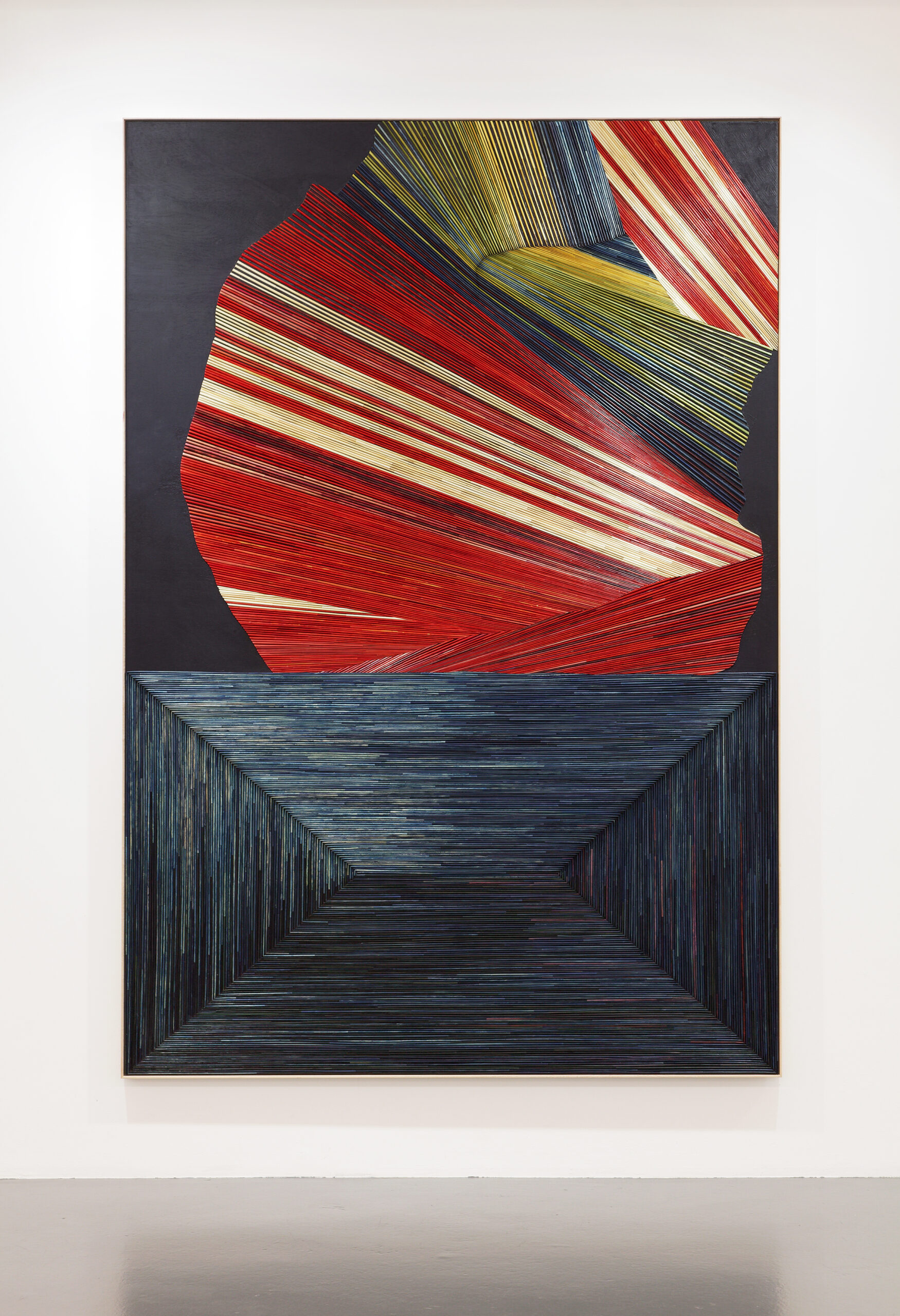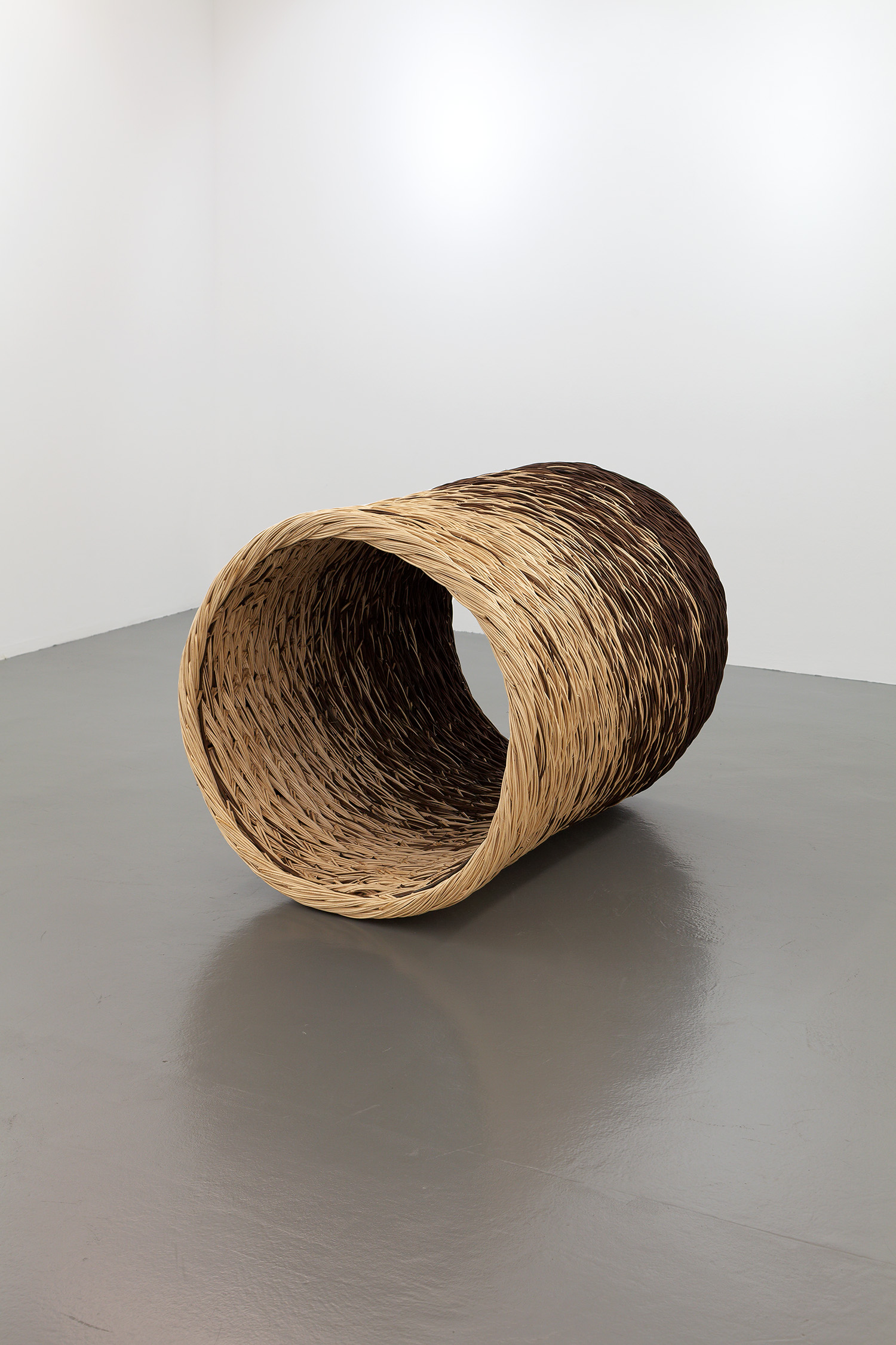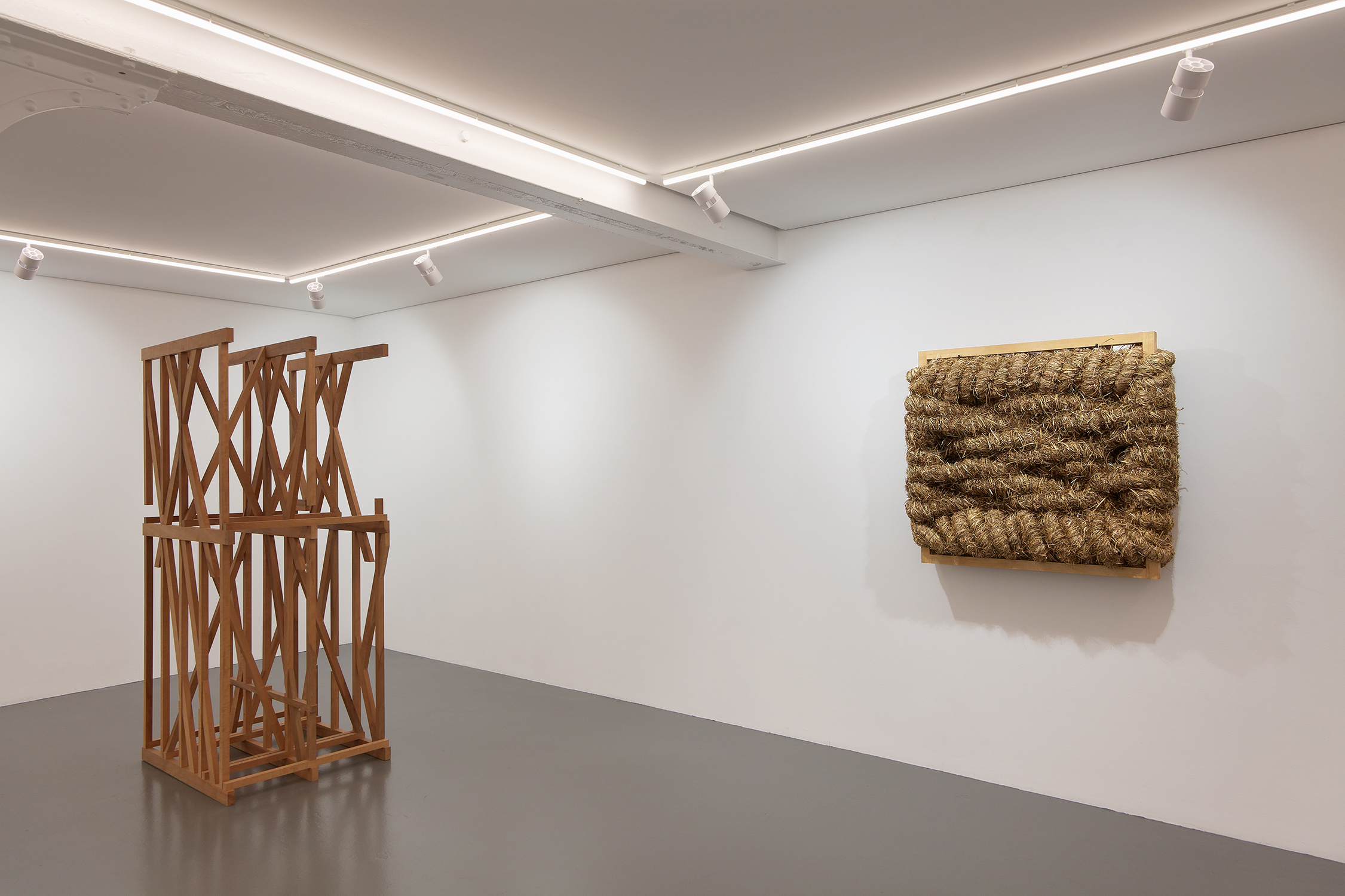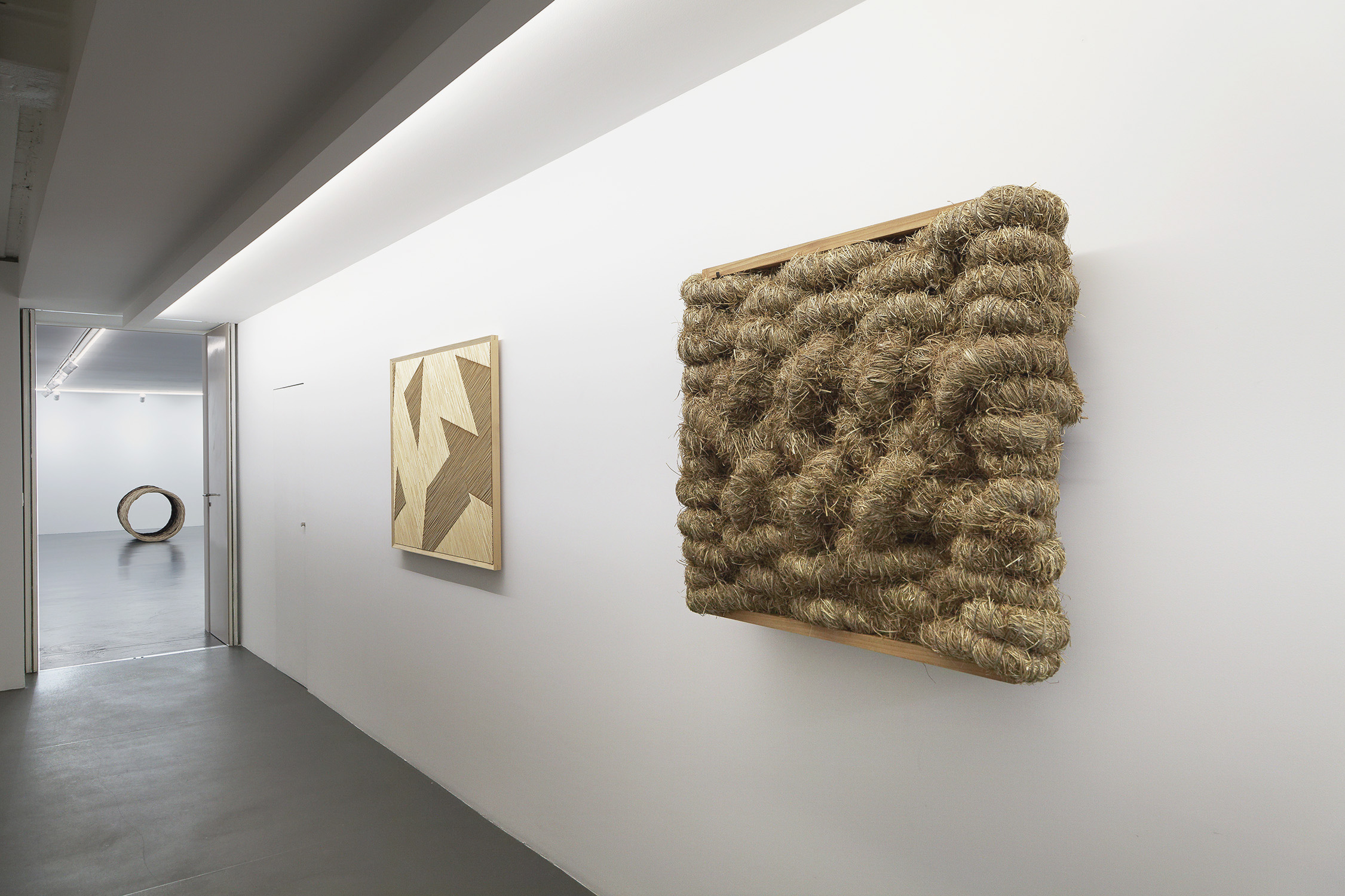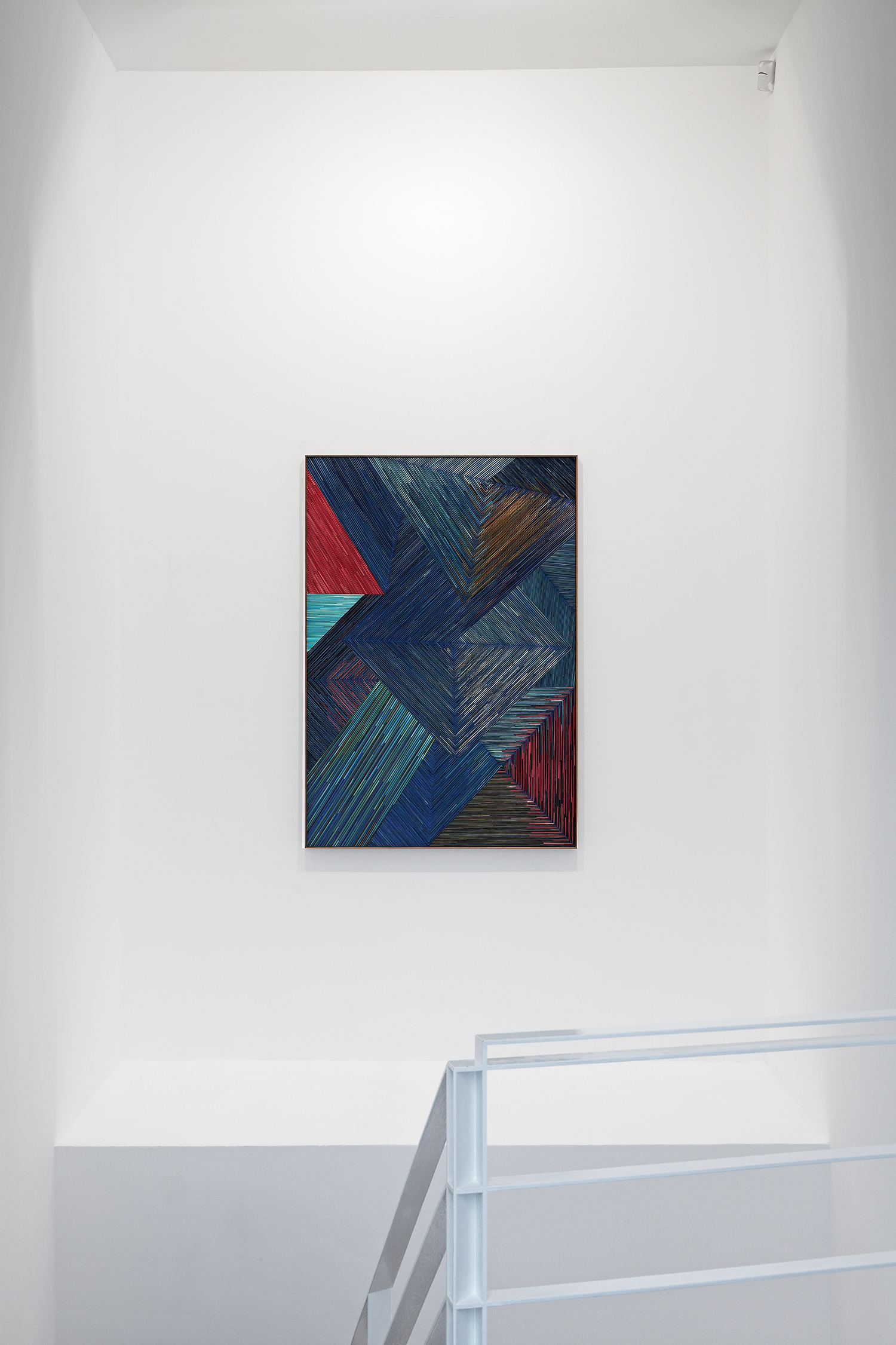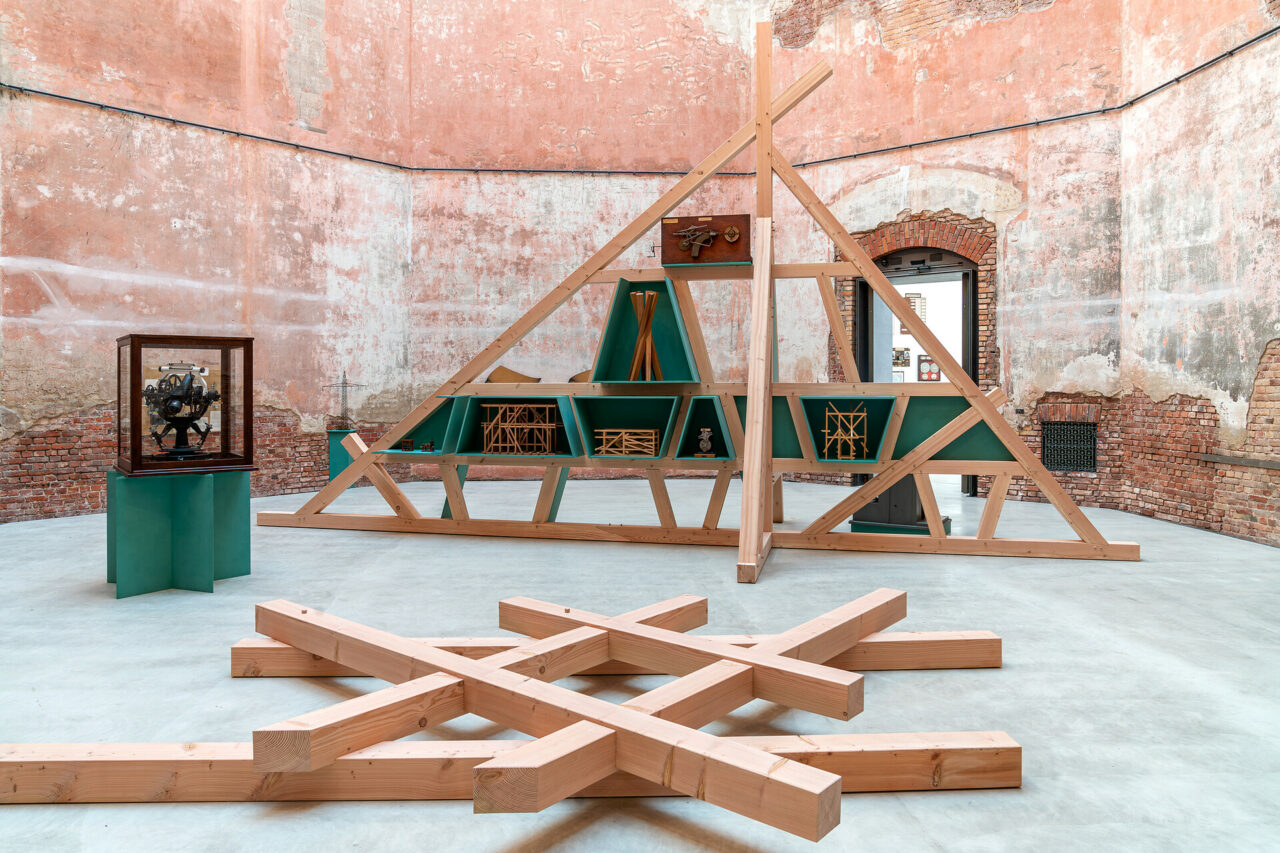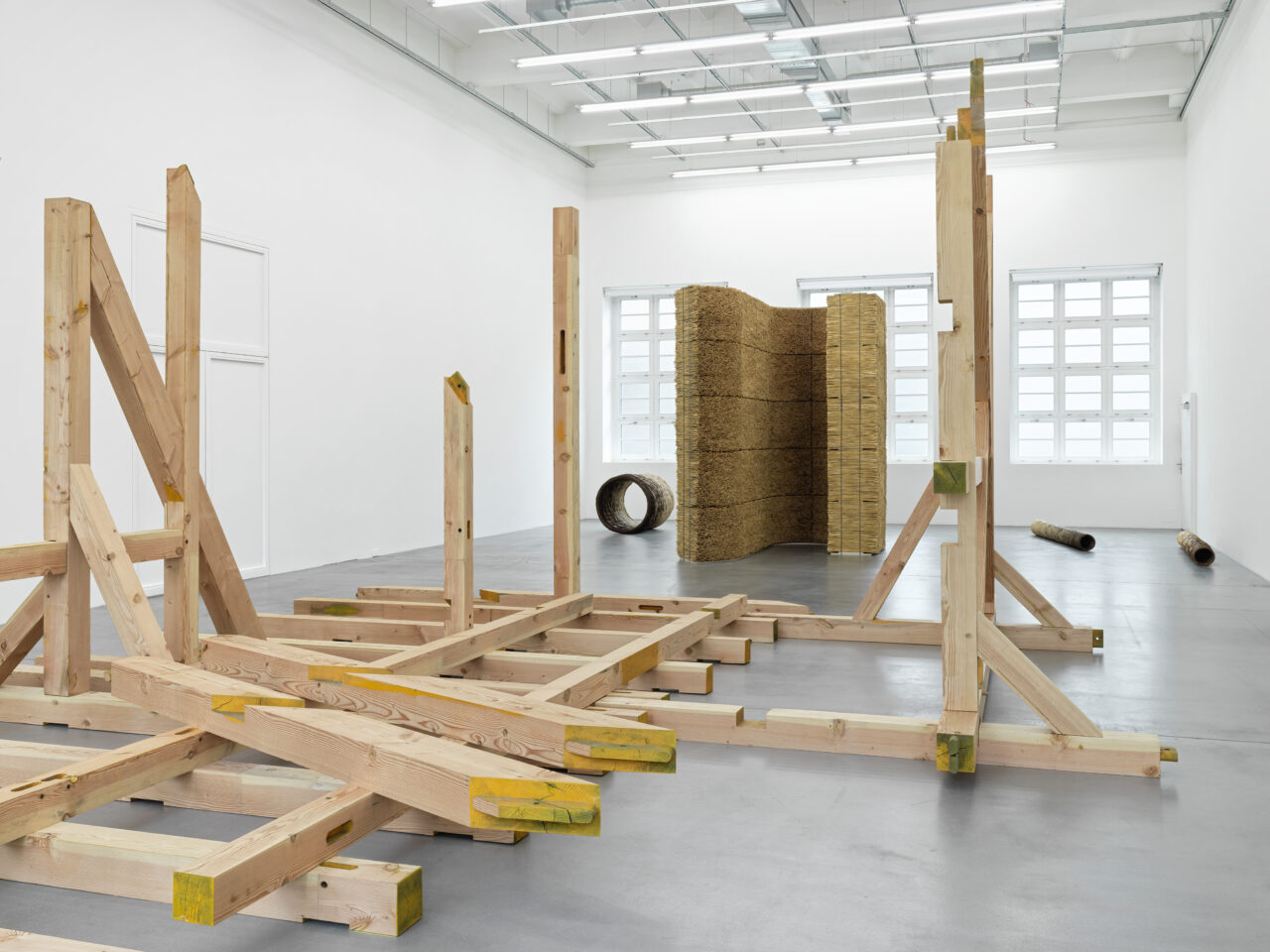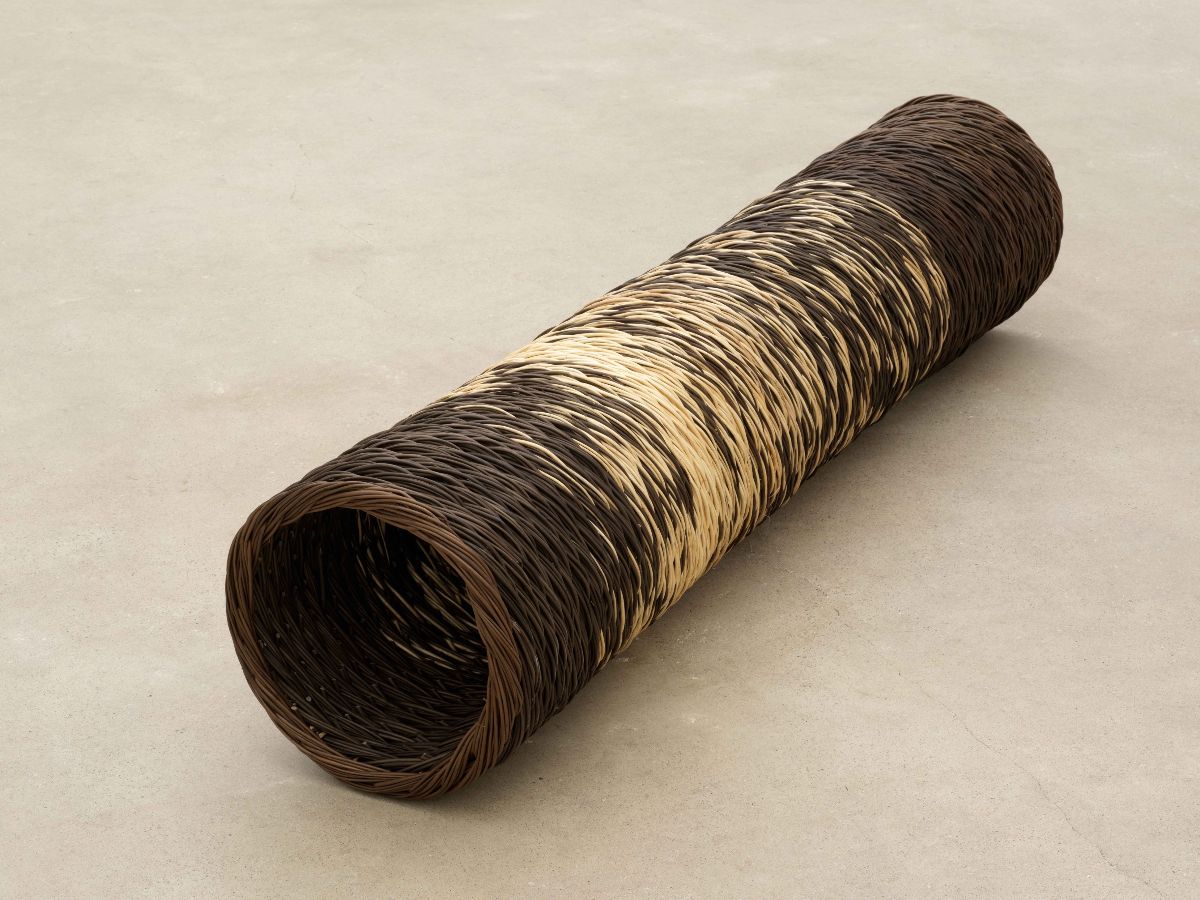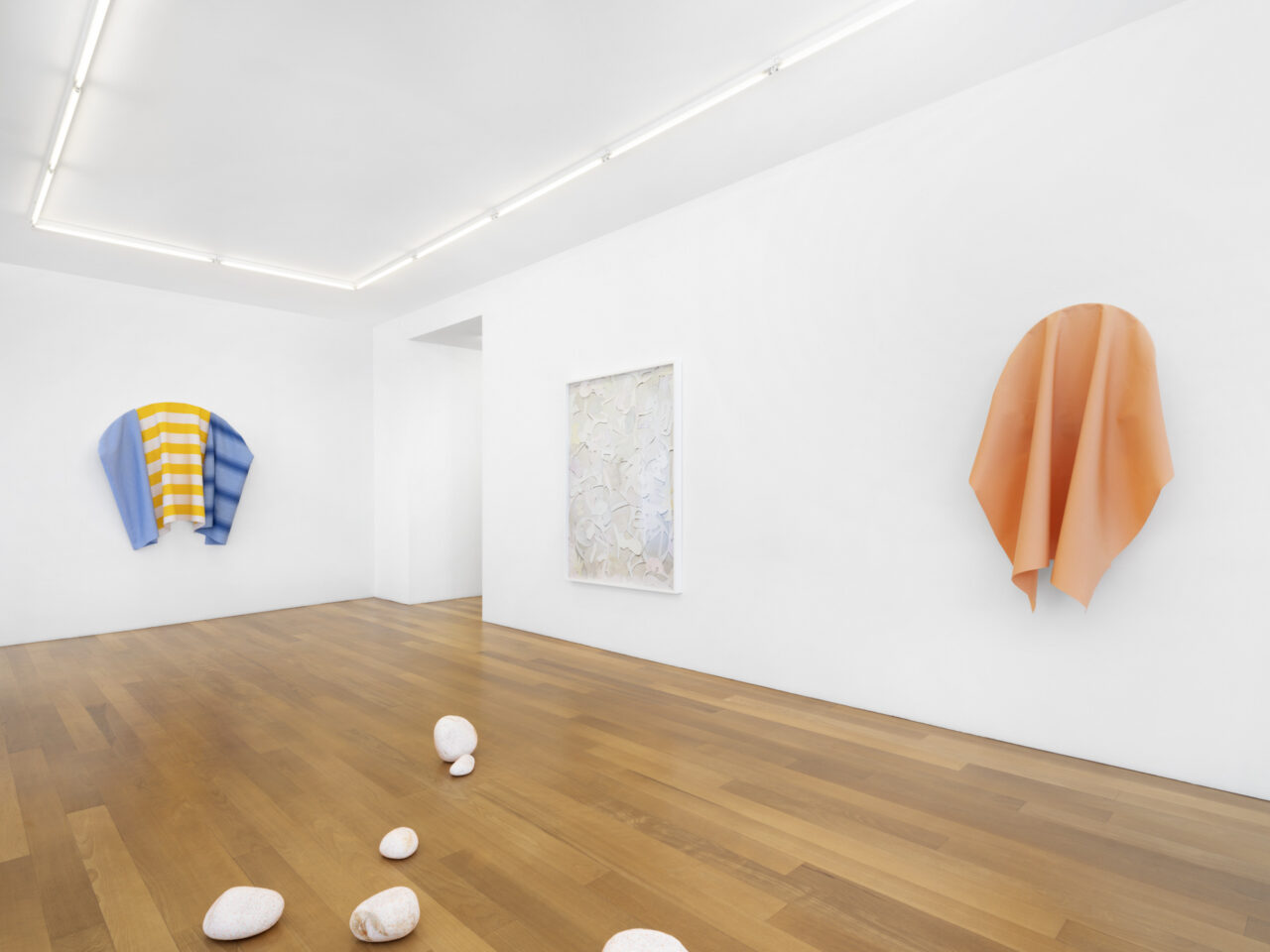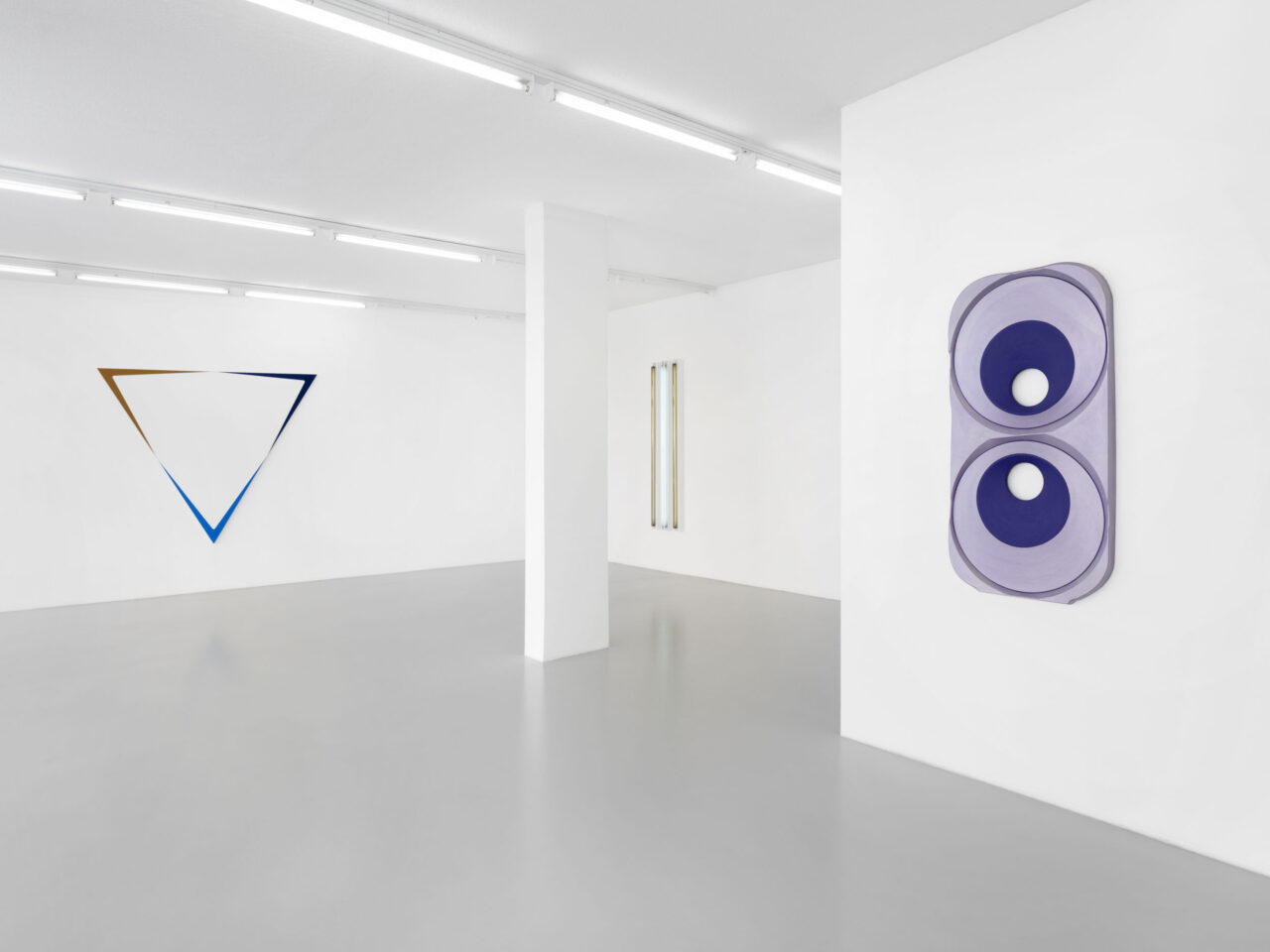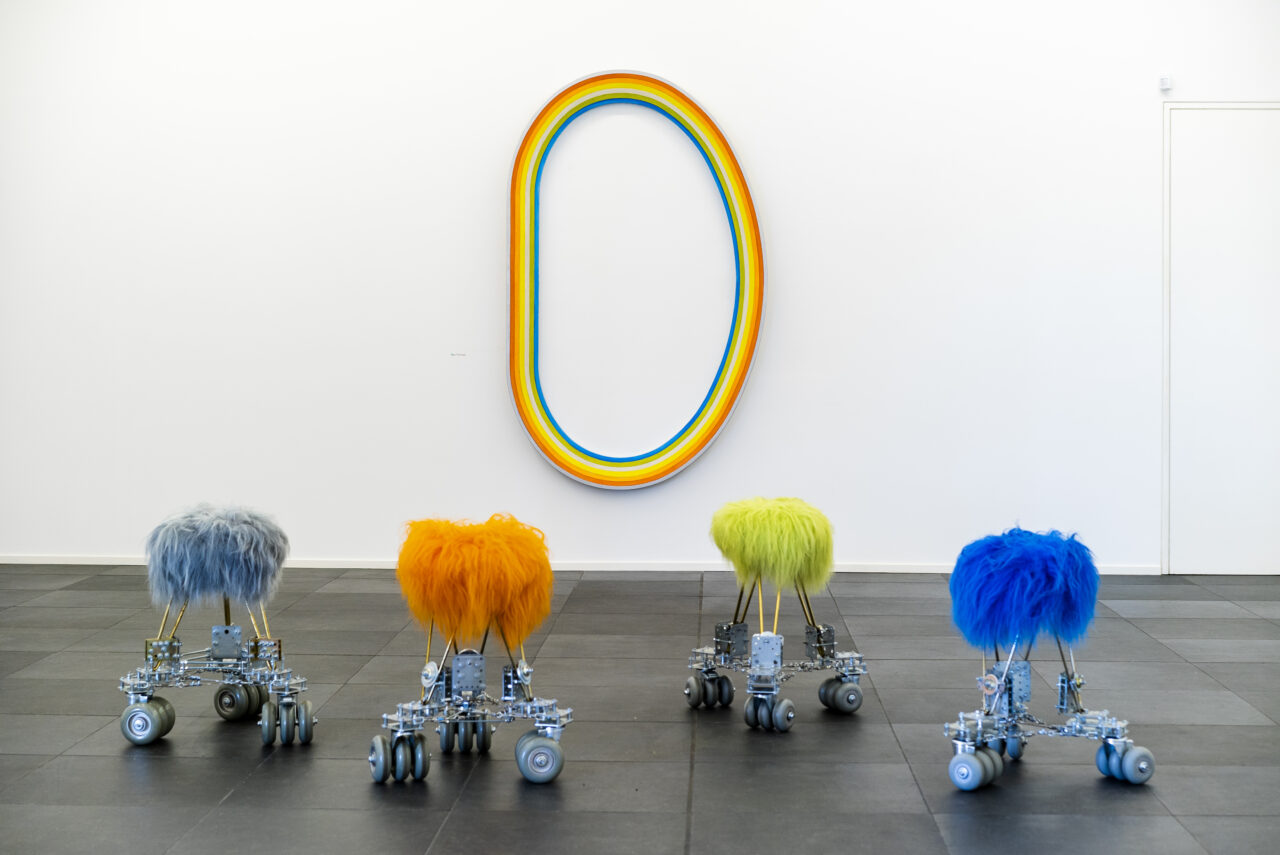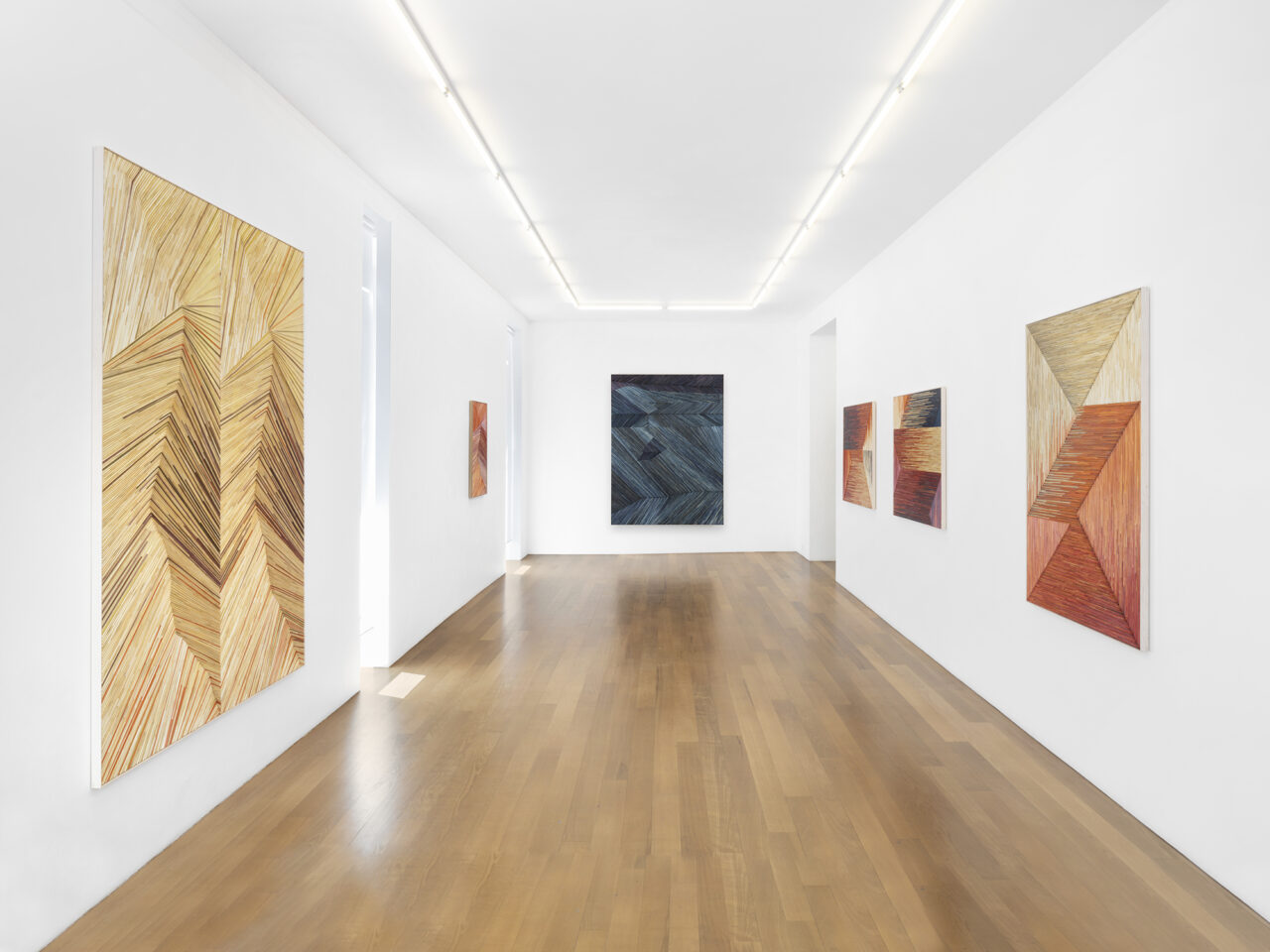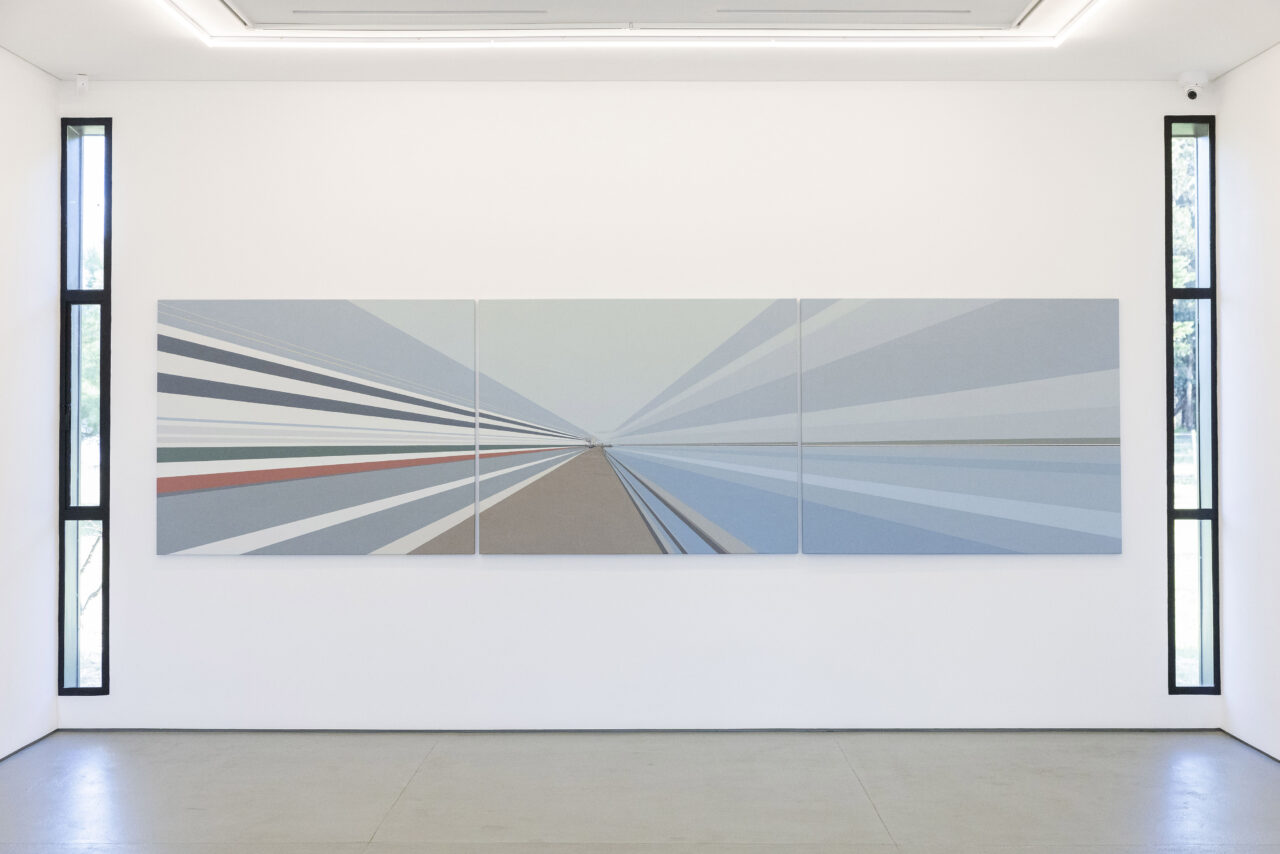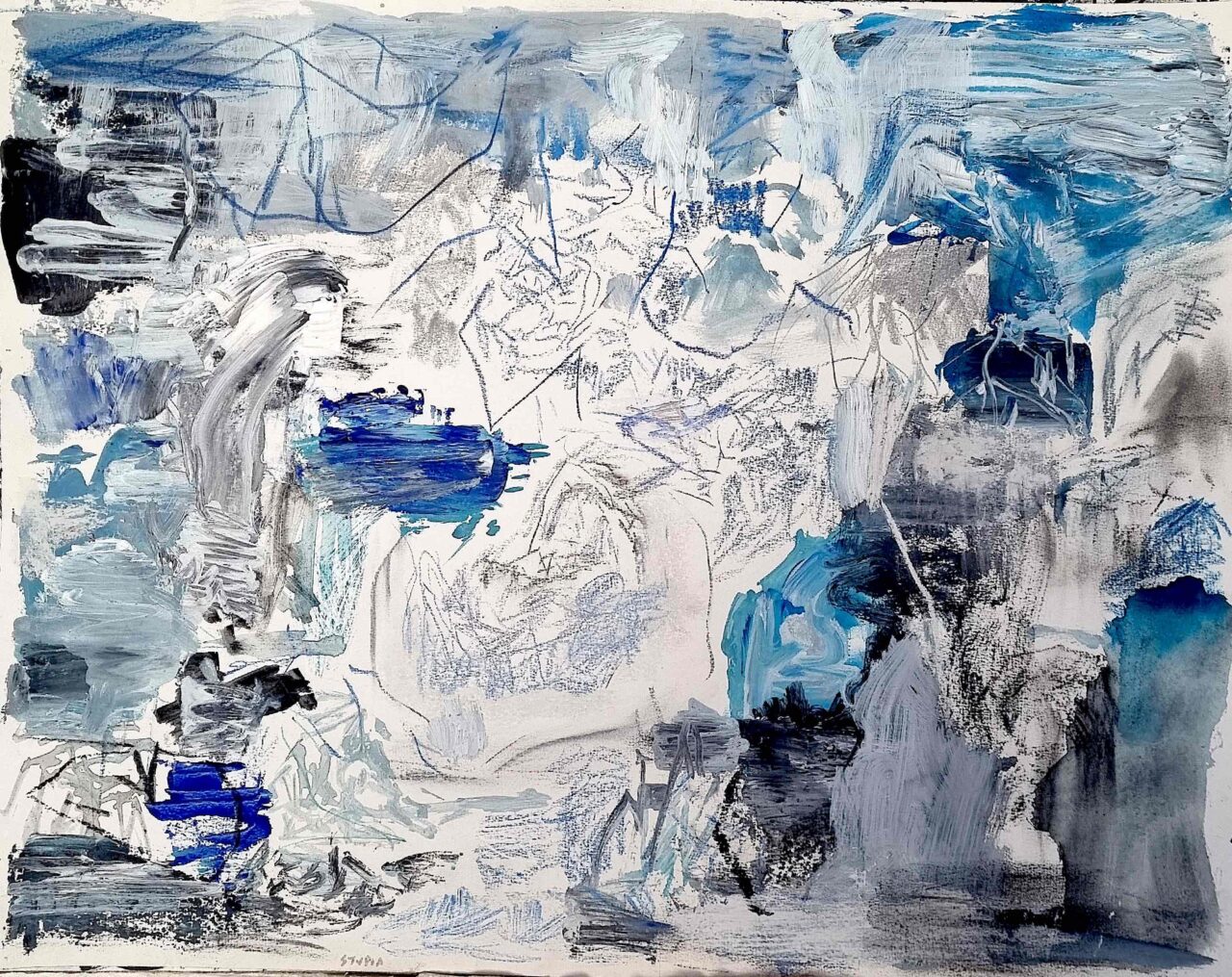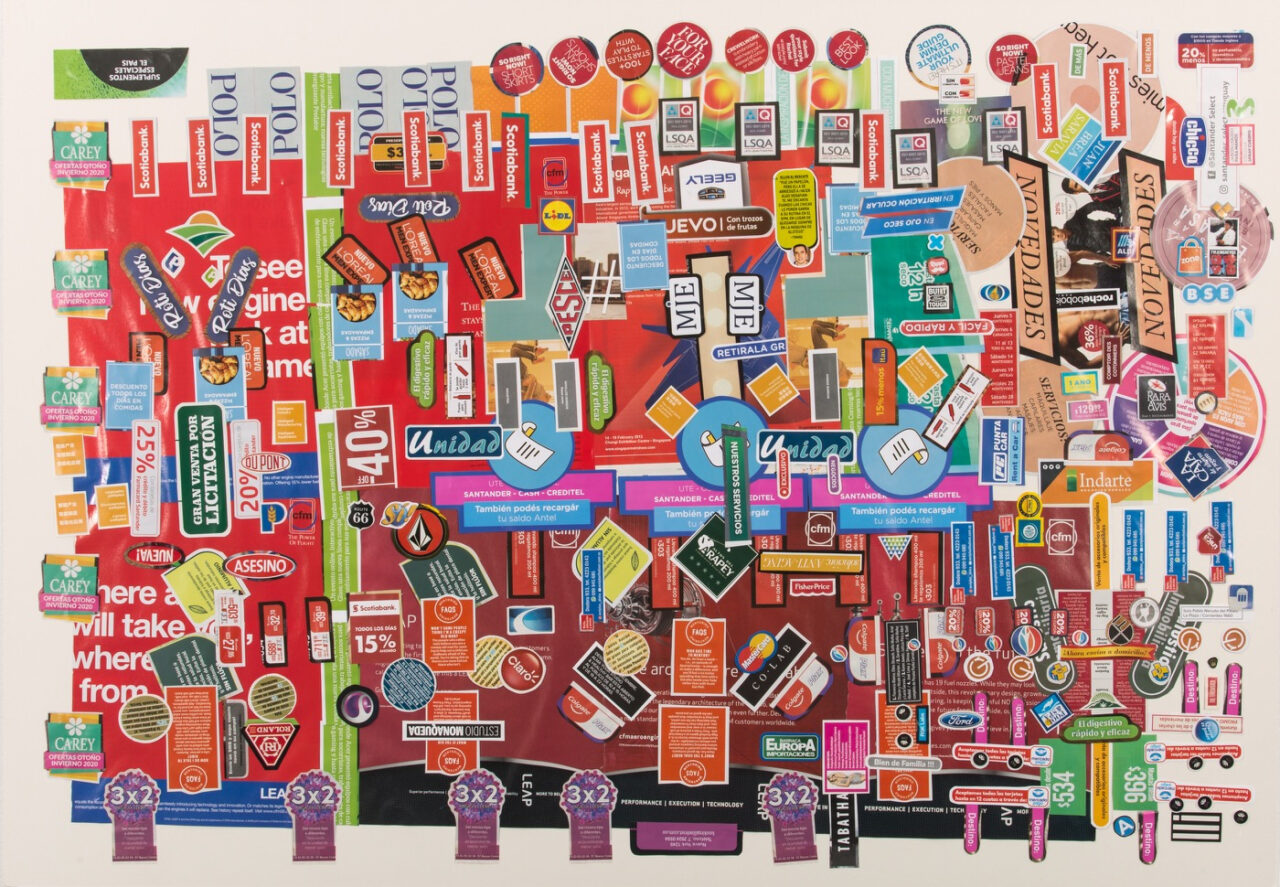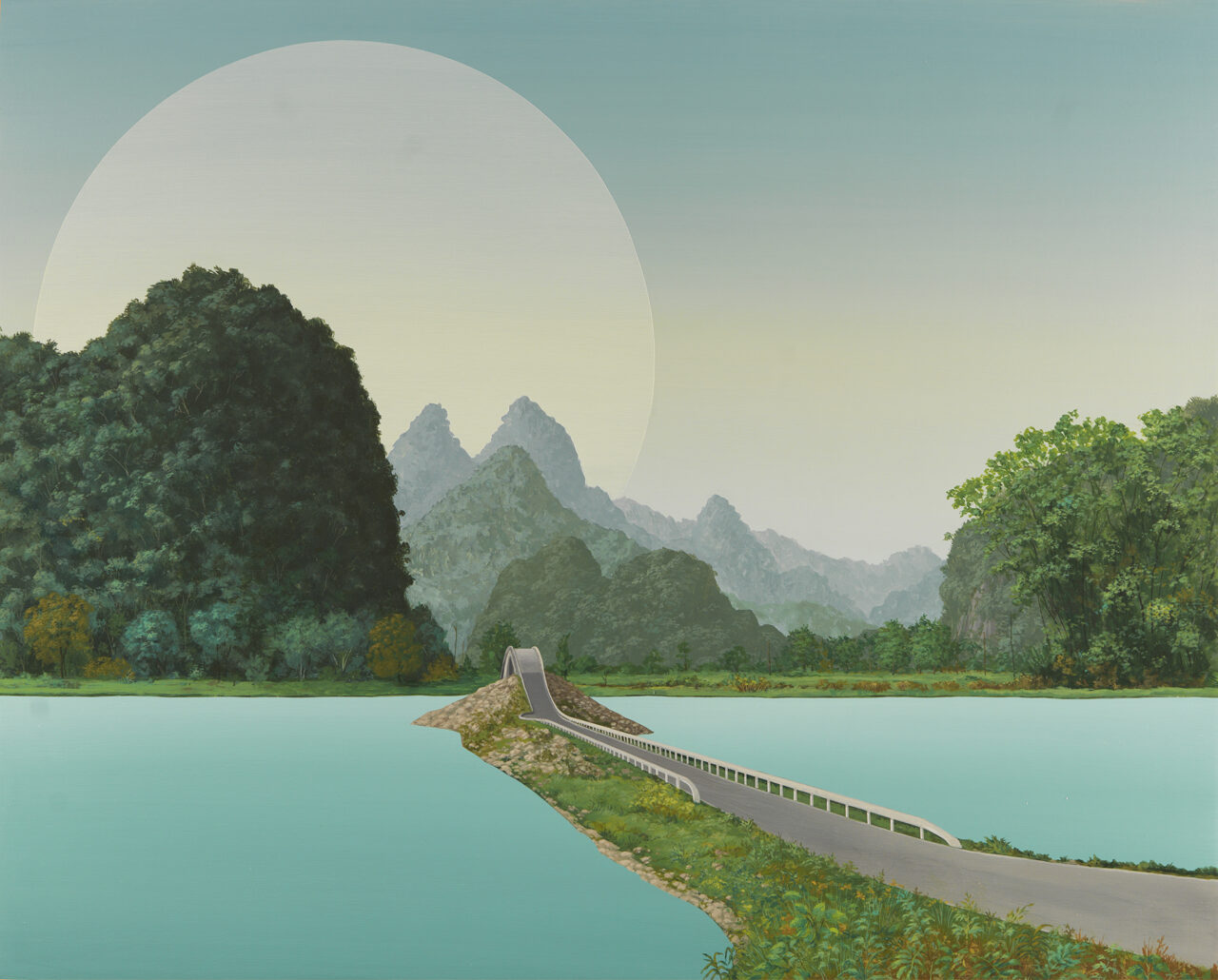Olaf Holzapfel – The river that connects the banks – Vernacular genealogies
Olaf Holzapfel
The river that connects the banks – Vernacular genealogies
18.10.24 → 21.12.24
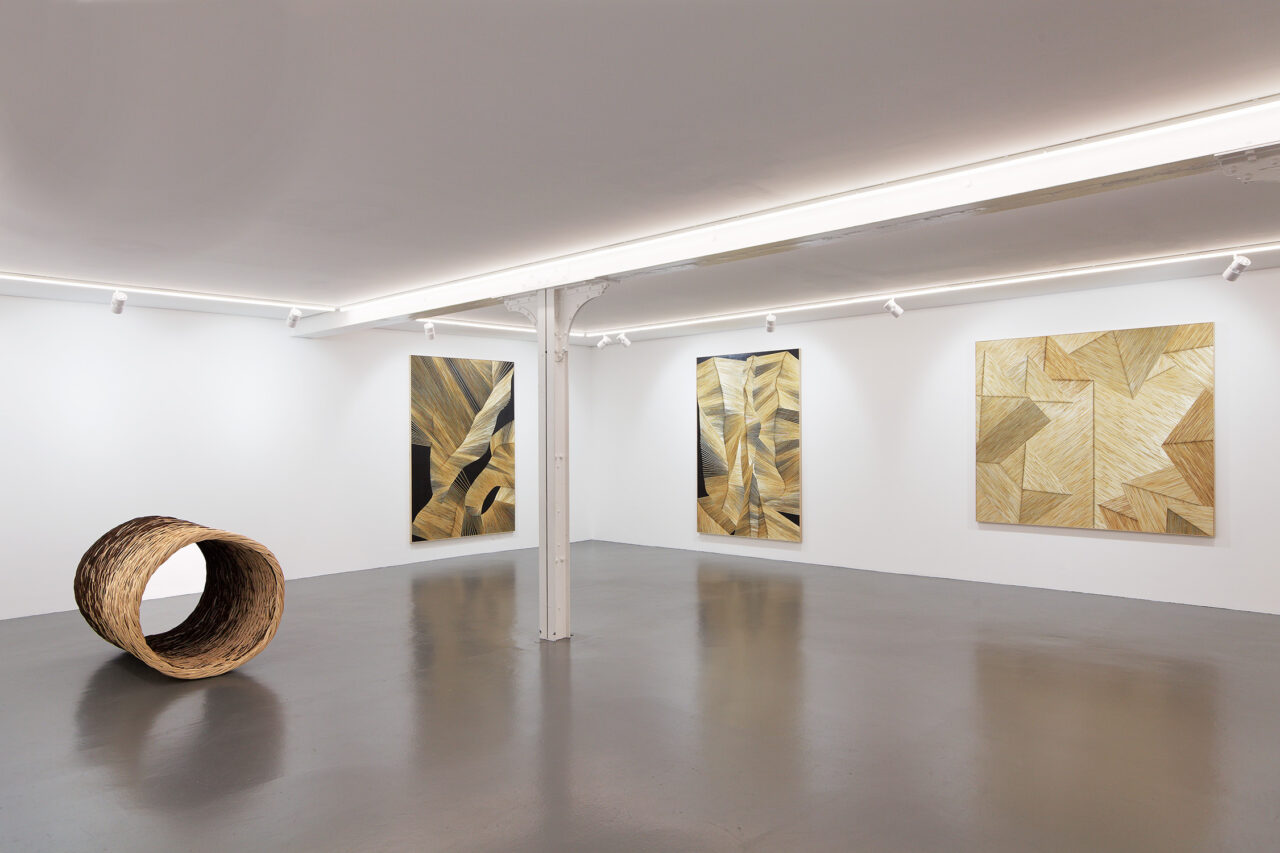
We are always interwoven in a balanced life with our environment, because we live in a fluid world. — Olaf Holzapfel
Xippas is pleased to present, for the first time in Paris, a personal exhibition by Olaf Holzapfel. Entitled, The river that connects the banks – Vernacular genealogies, the exhibition reveals how ancient and local traditions using wood, straw or hay permeate modern cultures and influence our understanding of art and landscape.
German artist Olaf Holzapfel (b. 1967) is known for his works in which he combines traditional crafts with contemporary concepts. His exhibitions address topics such as space, architecture and natural environments and incorporate organic materials. They question how these materials reflect the landscapes where they come from, creating a dialogue between man-made and natural worlds.
In his body of work “The Technique of the Land”, developed over the last 15 years, Holzapfel examines how pictorial languages originate from nature and continue to influence our perception of the world. In his view, the development of technology from the use of natural materials seamlessly transitions into what we call natural science. This development would explain the separation of culture and nature, a human invention of the 18th and 19th centuries which had more to do with an acceleration to overcome dependencies (such as the physical presence of ourselves as natural bodies). This also resulted in an assumed antagonism in perception and the egocentricity of men as they endeavor to conquer nature by means of technology.
Holzapfel work presents a very different view in this matter, understanding the world as being a fluid one in which men’s lives are interwoven in a balanced life with their environment. Reconnection with nature therefore becomes a prerequisite for all human beings, which is particularly evident to craftsmen, producers, but also to every textile entrepreneur, fashion seamstress or researcher. In this sense, his works are topical and tie in with a lasting tradition in European art, dating from the Renaissance.
Four bodies of work are presented in the exhibition, having in common vernacular traditions using natural resources. Presented in the center of the exhibition, Wilder Mann (2013), is an open construct turning tree trunks into lines and integrating building techniques which are still used to this day. Originating from the mining industry, these techniques (researched from archives and studies of half-timbered models) are used by the artist as an alphabet to create open ended sculptures which paradoxically appear fragile but are designed to carry heavy weights.
A similar intention lies behind the artist’s works woven with hay, only with more density. To make these, Holzapfel involves local residents in rural regions and teaches them to twist dry grass into ropes following a tradition used in Silesia (now part of Poland and Germany). The ropes are then twisted and woven, using patterns still applied in the clothing industry. Holzapfel’s fascination for patterns and works which are both pictures and sculptures is also present in his ongoing series of Straw pictures included in the exhibition. The singularity of these works, which also lean towards modern abstraction, lies in his intention to incorporate the landscape within a frame and brings to our attention the resulting effects of the sun where these plants grow.
Finally, as part of his exhibition, Holzapfel also presents a Baum (Tree) sculpture. Made with willow branches these sculptures are intended to shift our perception of trees which we usually perceive as being rooted, vertical, dense and static. In this is case, Olaf takes a contrary and unsettling stance, presenting this tree horizontally with a hollow shape and a woven design reminding viewers of nature’s constant fluidity.
By bringing together these four bodies of work, Olaf Holzapfel therefore creates another kind of landscape, which not only pays tribute to nature but also combines the aesthetics of modern abstraction with ancient crafts.
Olaf Holzapfel was born in 1967 in Dresden. He lives and works in Berlin, Germany.
After studying Fine Arts at the HfBK Dresden and at the National Institute of Design in Ahmedabad, India, he received an MFA in 2003. He was in residence at Columbia University in New York and taught as a visiting professor at the Kunstakademie Karlsruhe and HfBK Hamburg. Olaf Holzapfel has participated in numerous solo exhibitions, including the Daniel Marzona Gallery in Berlin, the Sabine Knust Gallery in Munich, the Bündner Kunstmuseum in Chur, Switzerland, and the Museo de Arte Contemporáneo in Salta, Argentina and more recently. In 2024, Olaf Holzapfel was awarded by the Zurich Art Prize which was followed by a solo show at the Museum Haus Konstruktiv in Zürich, Switzerland from May 30 to September 8, 2024.
His work is part of institutional and private collections such as the Robelin collection and the collection of the Federal Republic of Germany.
Works
-
![Olaf Holzapfel Xippas 2024 13]()
Olaf Holzapfel, The river that connects the banks – Vernacular genealogies
Exhibition view, Xippas Paris, 2024 -
![Olaf Holzapfel Xippas 2024 10]()
Olaf Holzapfel, The river that connects the banks – Vernacular genealogies
Exhibition view, Xippas Paris, 2024 -
![Olaf Holzapfel Xippas 2024 11]()
Olaf Holzapfel, The river that connects the banks – Vernacular genealogies
Exhibition view, Xippas Paris, 2024 -
![OH024_6'hq copie]()
Olaf Holzapfel
Drei Blätter, 2024
Paille, bois, pigment, colle et vernis
211 x 145 x 3,5 cm
Exhibition view, The river that connects the banks – Vernacular genealogies, Xippas Paris, 2024 -
![OH24_8']()
Olaf Holzapfel
Baum 6, 2024
Cylindre en bois de saule
130 x 90 x 90 cm
Exhibition view, The river that connects the banks – Vernacular genealogies, Xippas Paris, 2024 -
![Olaf Holzapfel Xippas 2024 15]()
Olaf Holzapfel, The river that connects the banks – Vernacular genealogies
Exhibition view, Xippas Paris, 2024 -
![Olaf Holzapfel Xippas 2024 05]()
Olaf Holzapfel, The river that connects the banks – Vernacular genealogies
Exhibition view, Xippas Paris, 2024 -
![Olaf Holzapfel Xippas 2024 03]()
Olaf Holzapfel
Spatial Forms, 2019
Paille sur bois, peinture végétale naturelle
147 x 102 x 3,5 cm
Exhibition view, The river that connects the banks – Vernacular genealogies, Xippas Paris, 2024

